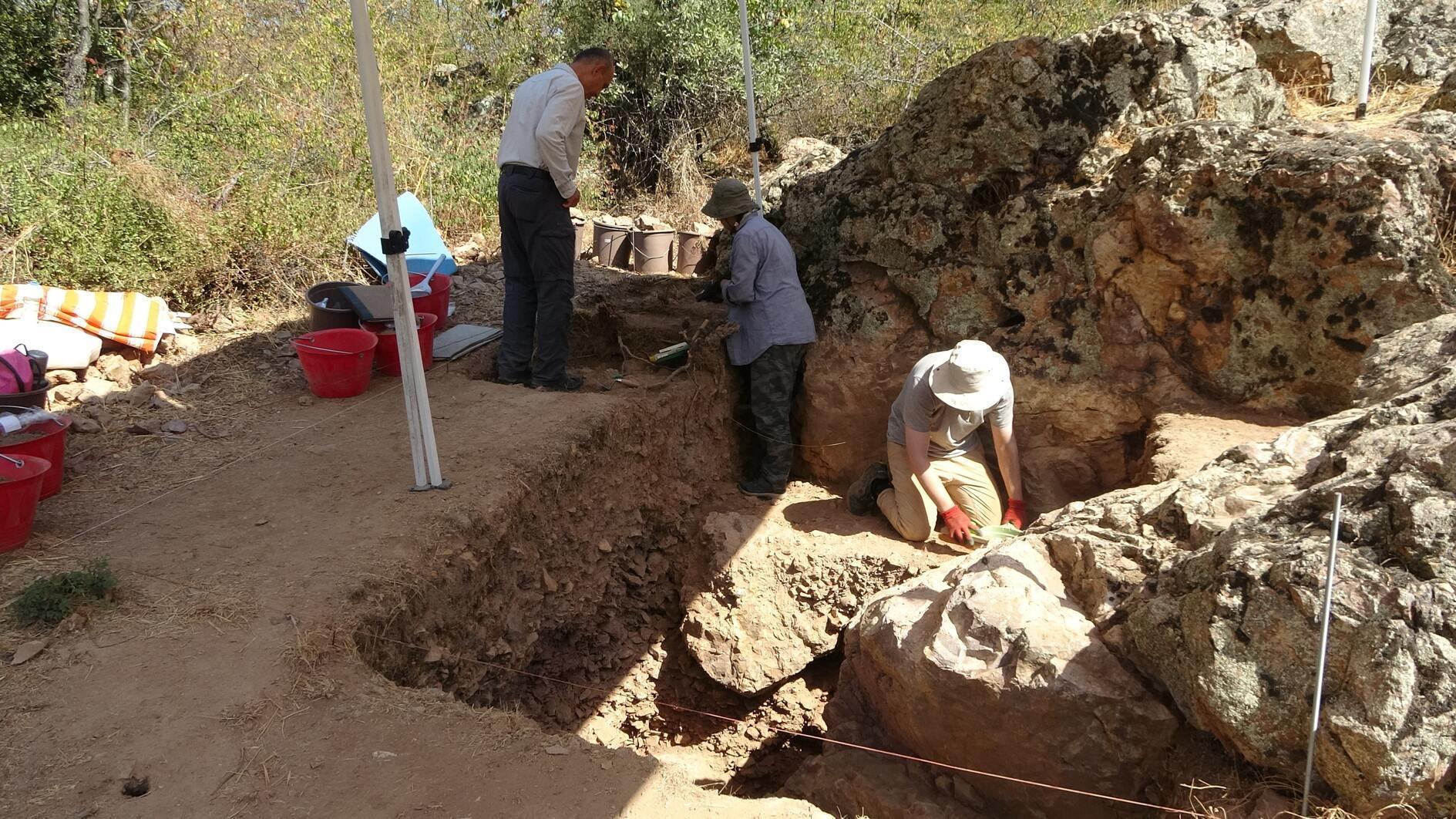Human life traces, ancient tools uncovered in İnkaya Cave
ÇANAKKALE

Archaeologists have unearthed 86,000-year-old traces of human life and non-in-situ handled tools during the first excavation work at İnkaya Cave in the western province of Çanakkale.
The ongoing excavation, under the scientific coordination of Ismail Özer and the Troy Museum Directorate, continues a project that began in 2017.
The cave located within the borders Bahadırlı village of the Çan district, is 235 meters above sea level with a ceiling height of ceiling of the cave is 3 meters. It had previously revealed life traces dating back thousands of years, but this year’s discoveries are particularly significant.
The İnkaya Cave is also within a Grade 1 Archaeological Site, which was declared in 2011 following the discovery of a Late Roman-Early Eastern Roman mosaic floor on Çakmaktepe.
“The people who lived in the region during the Middle Paleolithic period resided here for a long time, making extensive use of the flint raw materials and water resources,” Özer said.
Excavations have uncovered sections of the cave that were previously dated, spanning an area of approximately 500 square meters, and have also revealed tools exposed by erosion.
Among these finds are typical tools from the Middle Paleolithic period, with some discoveries being slightly older than those found in other parts of the cave.
The ongoing efforts focus on different trenches within the cave, revealing not only more tools but also how they were used by the people of that era.
“By expanding excavations in the coming years, we aim to better understand the potential of the cave,” Özer explained. The work so far has covered a 41-square-meter trench, showing significant promise for future discoveries.
A notable find this year is a set of chipped stone tools, still in their original positions.
“The importance of these tools is that it shows that the human brain had reached a certain level of complexity,” Özer noted.
He added that the tools demonstrate advanced use of materials, including bone and dry skin, to form handles allowing the tip of the tool to be used in a more efficient way, similar to the knives, trowels and cleavers we use in our daily lives.
These handles, which are not commonly found, suggest that the people of this period were capable of producing more complex tools.
“Our findings show that these handled tools are unique in their design, reflecting the ingenuity of the people that made them,” he continued.
“These tools are created by shaping the tip part so that it can merge with a different material, especially at the tip, and this thinning is done consciously. It is not a very common find.”
















